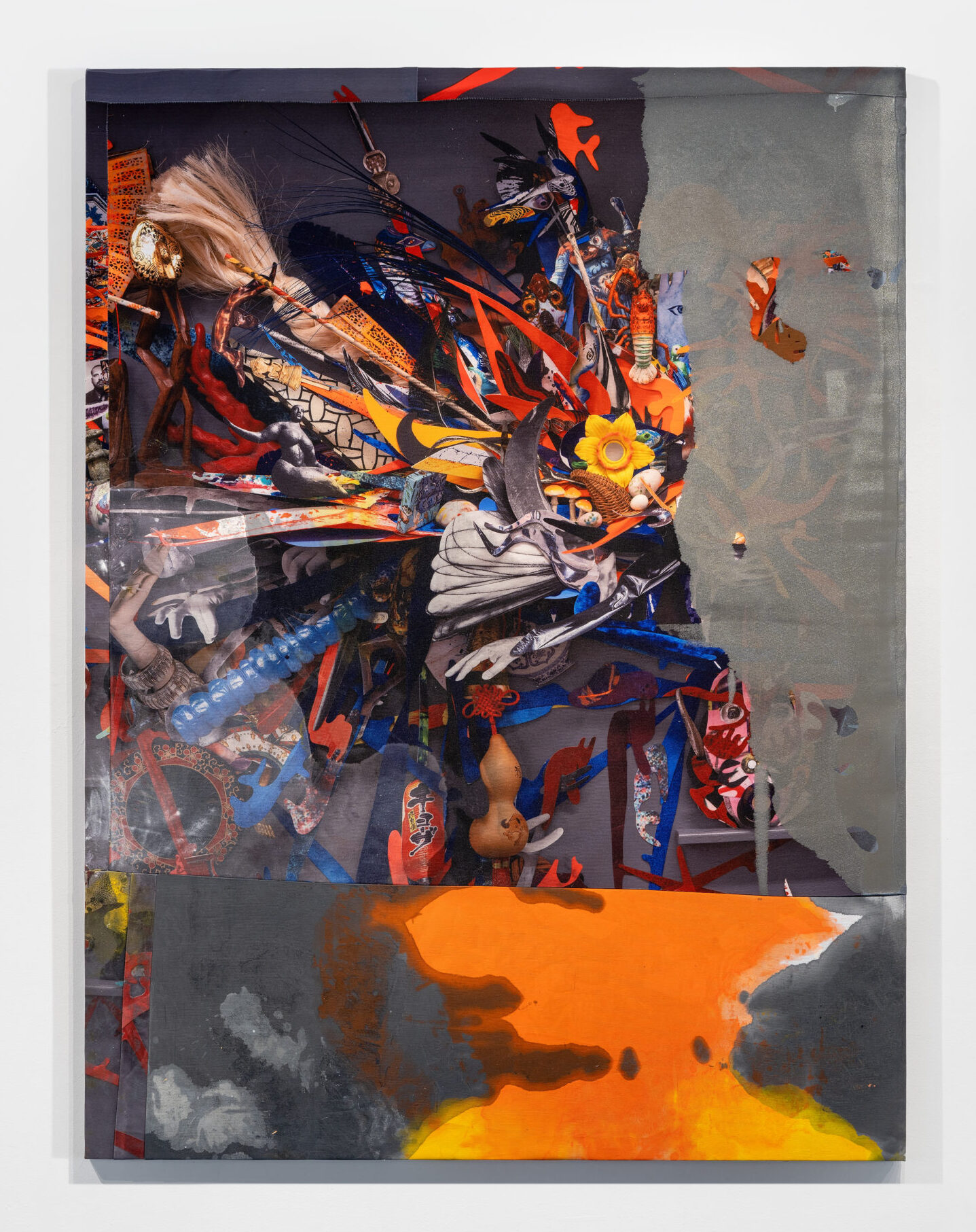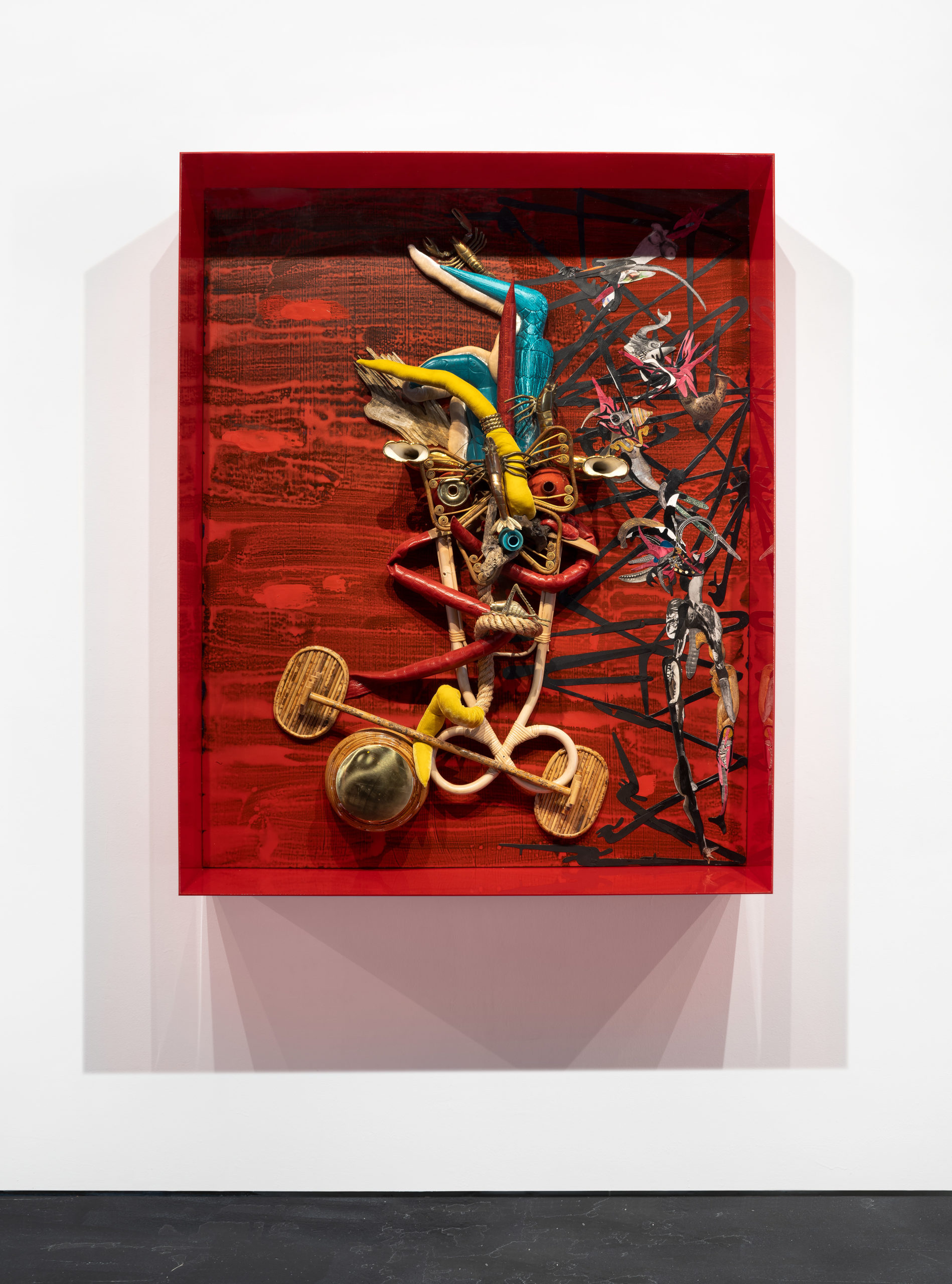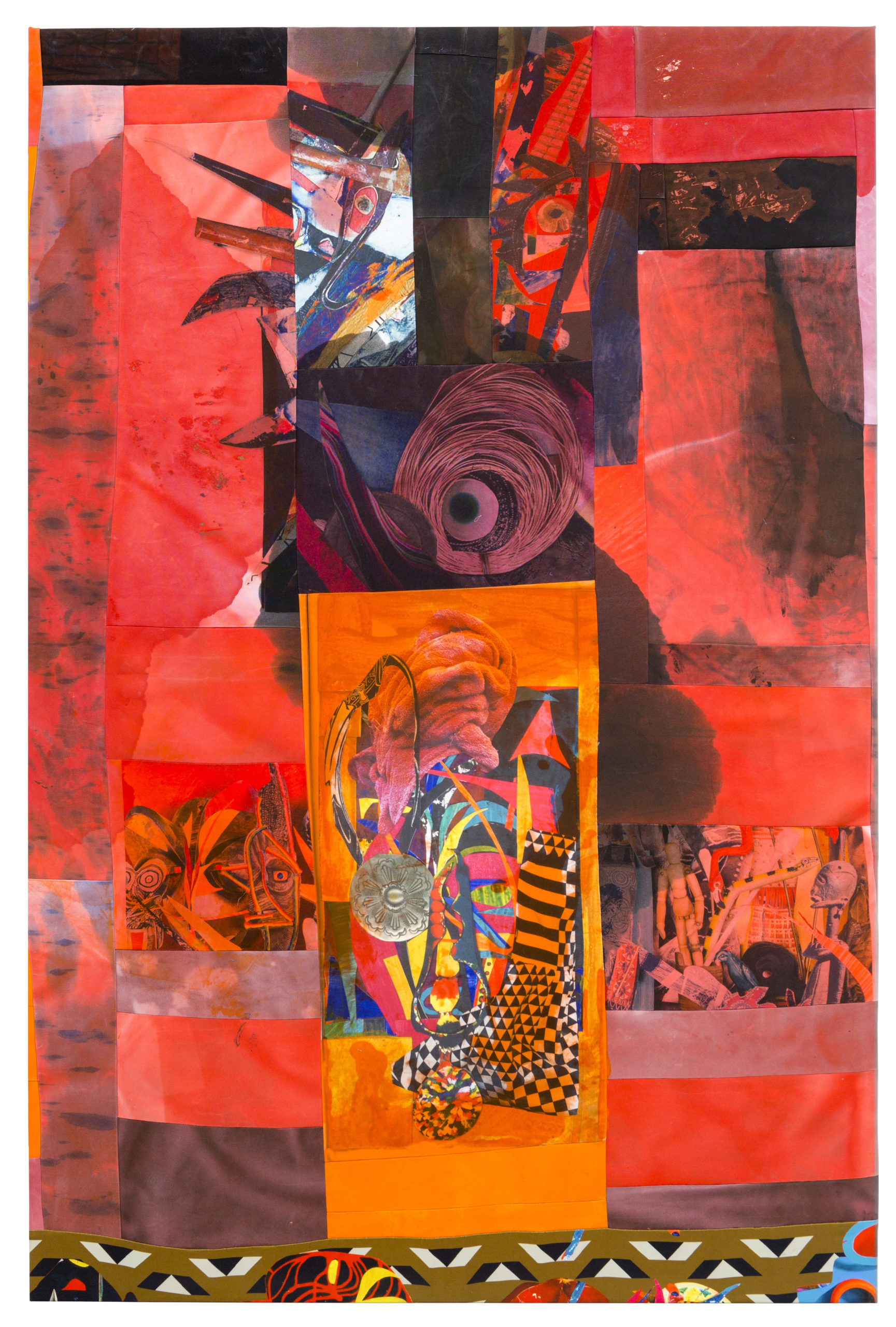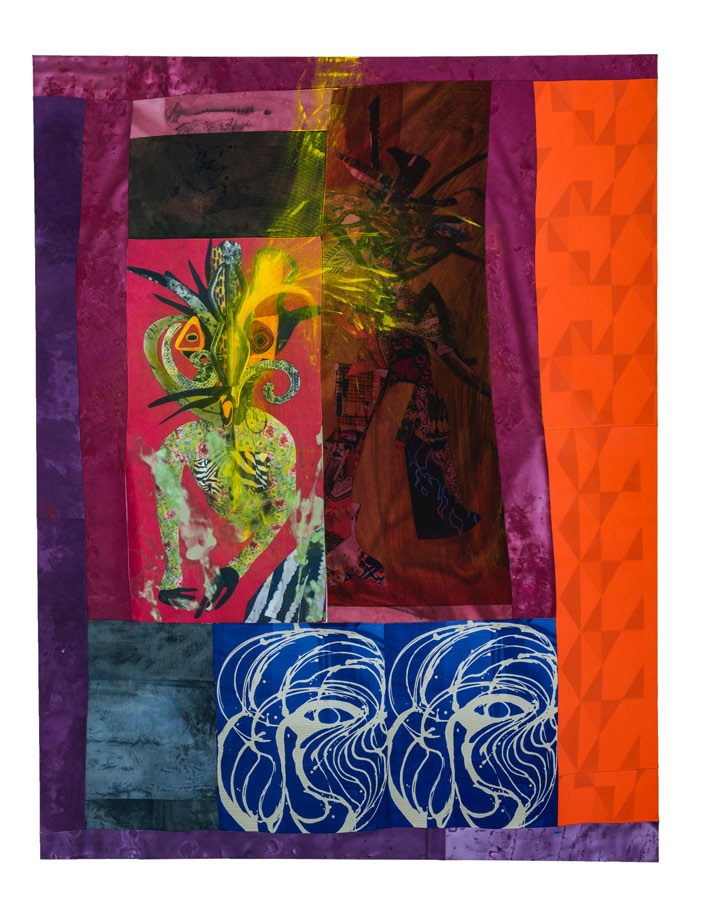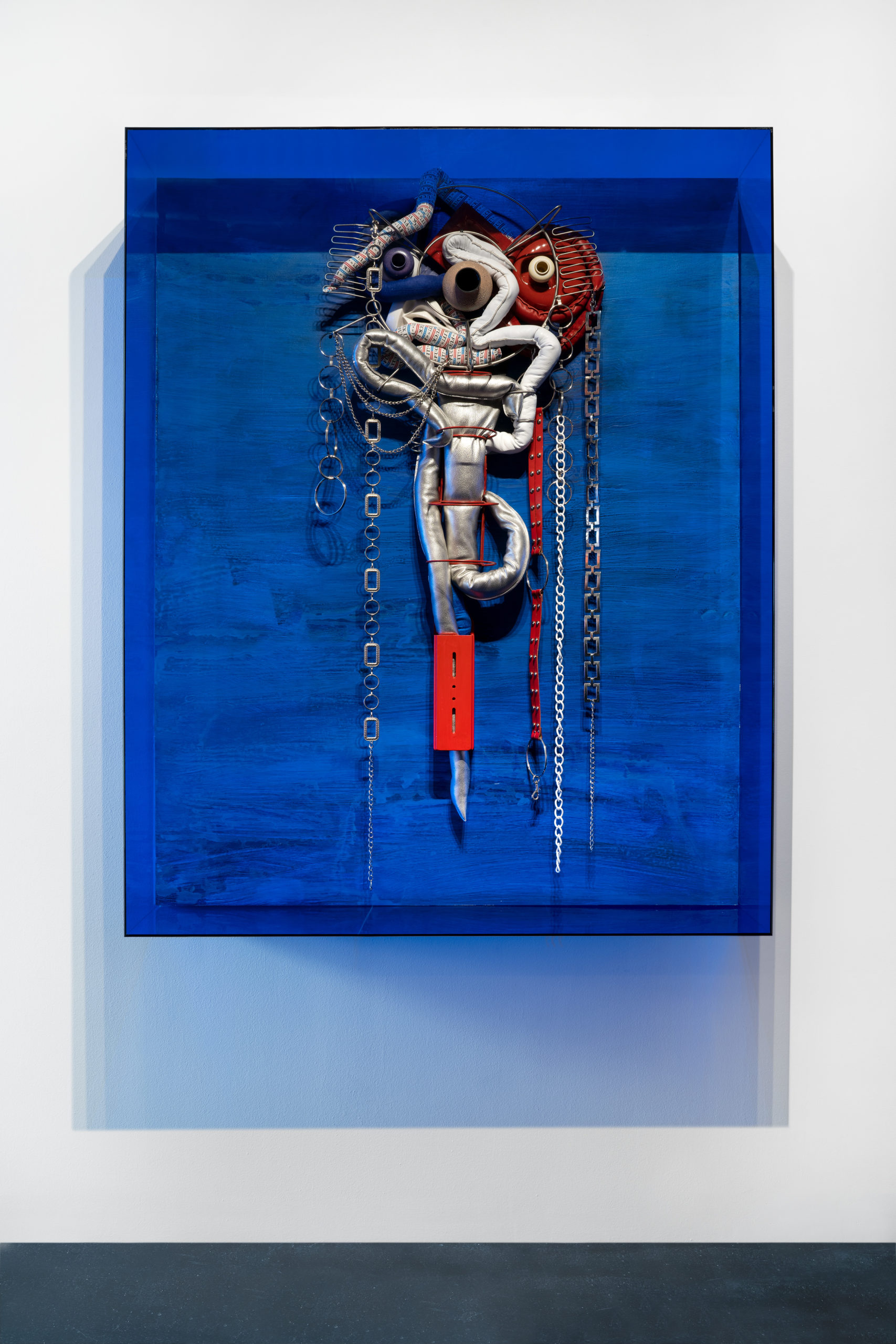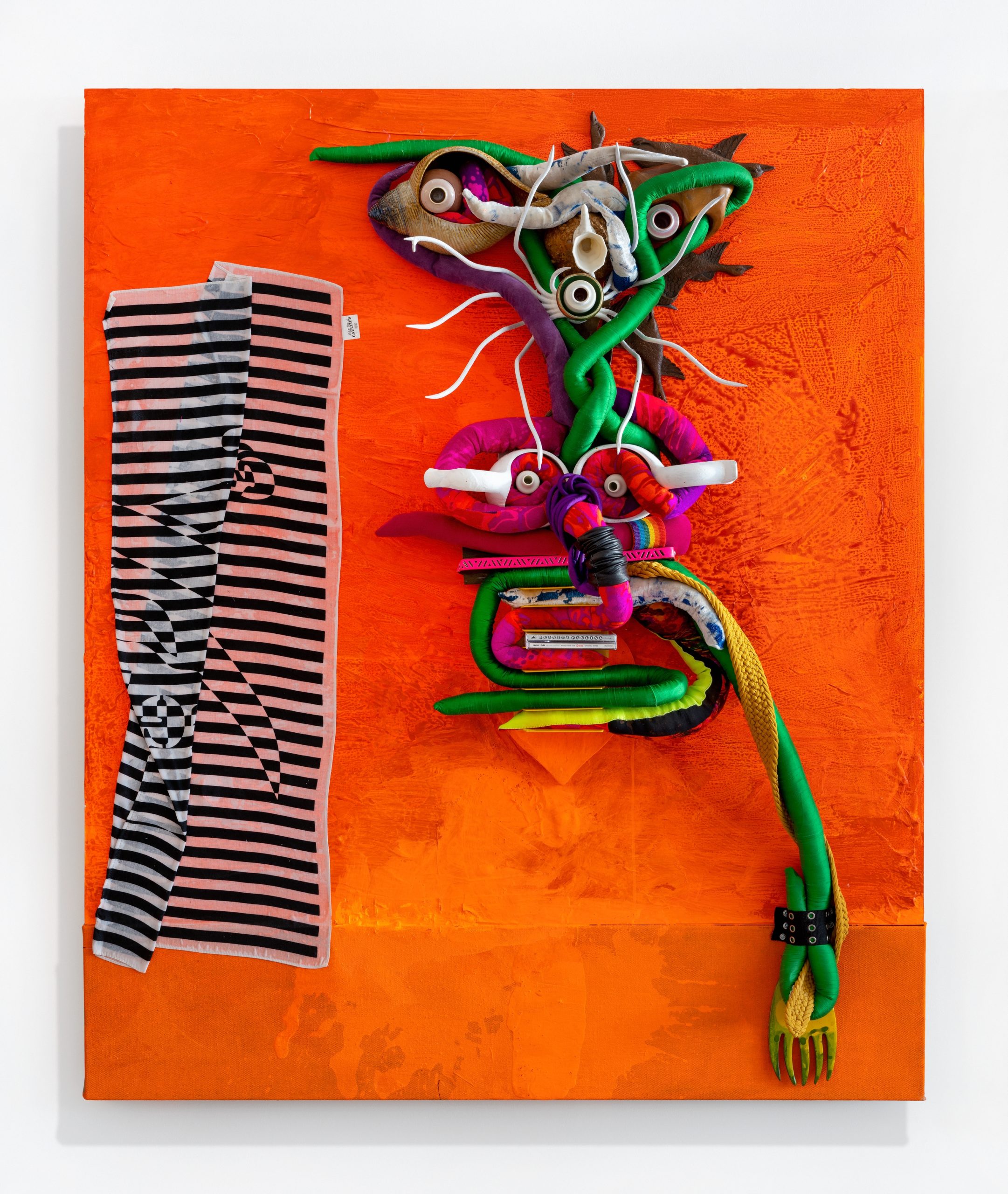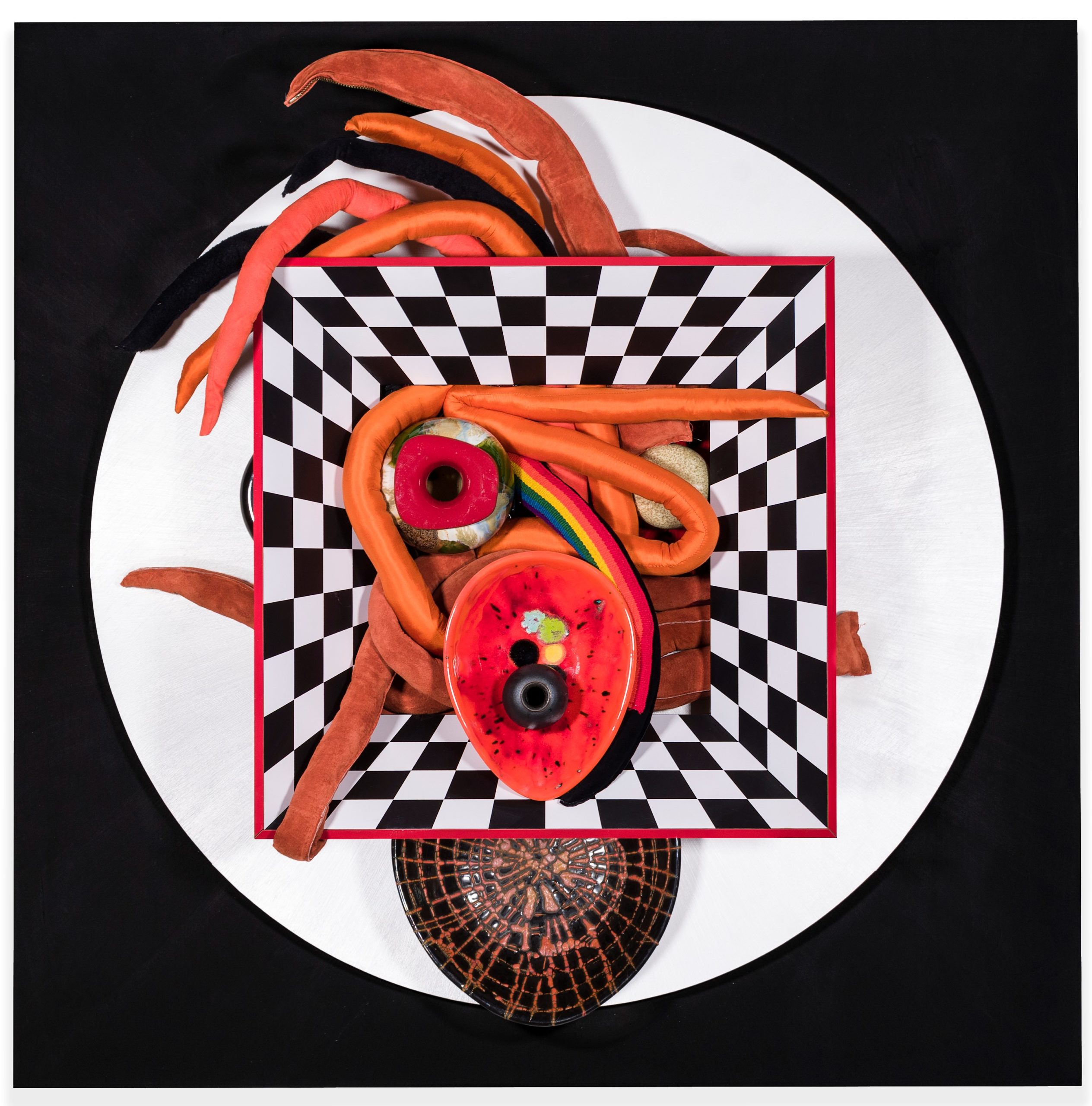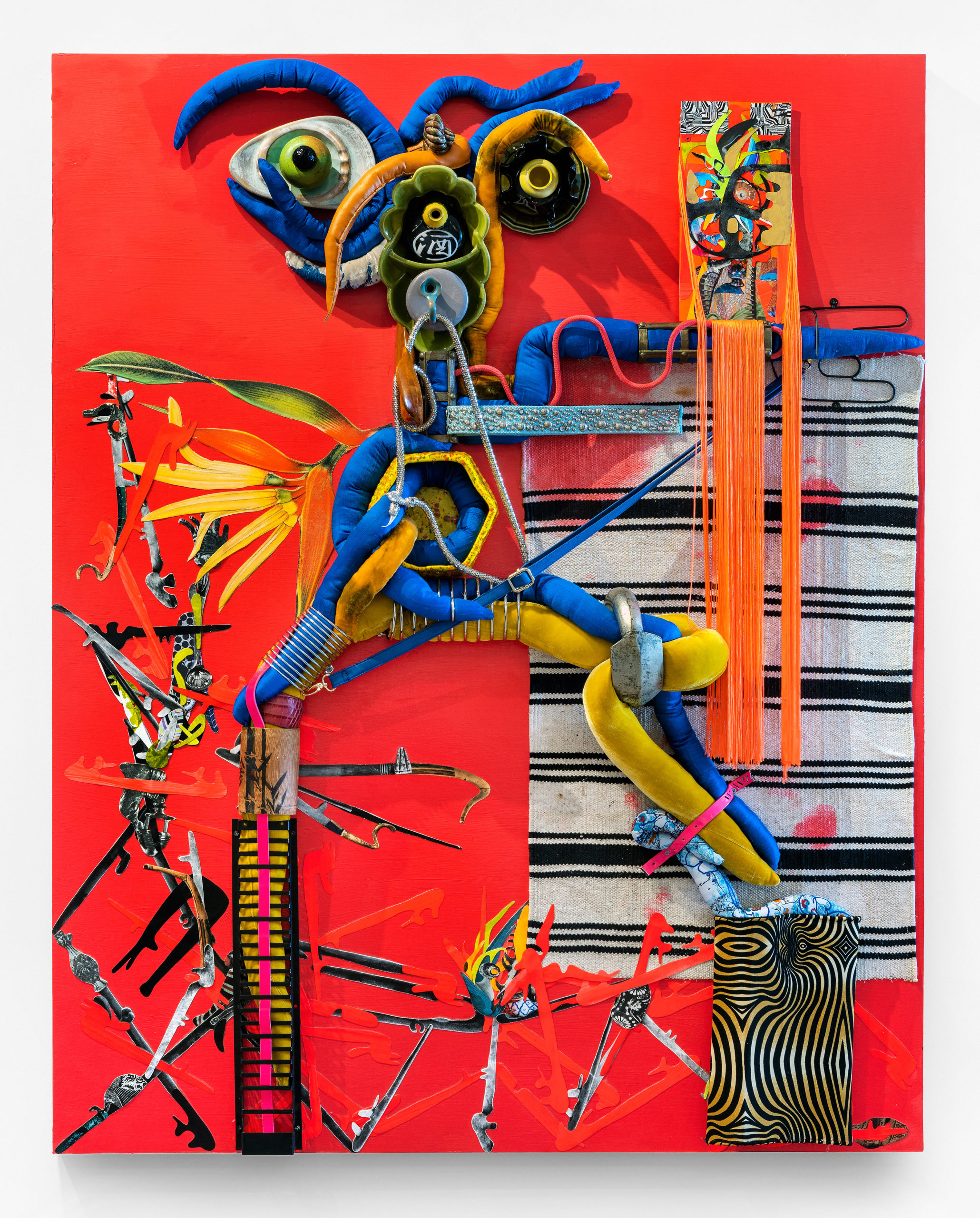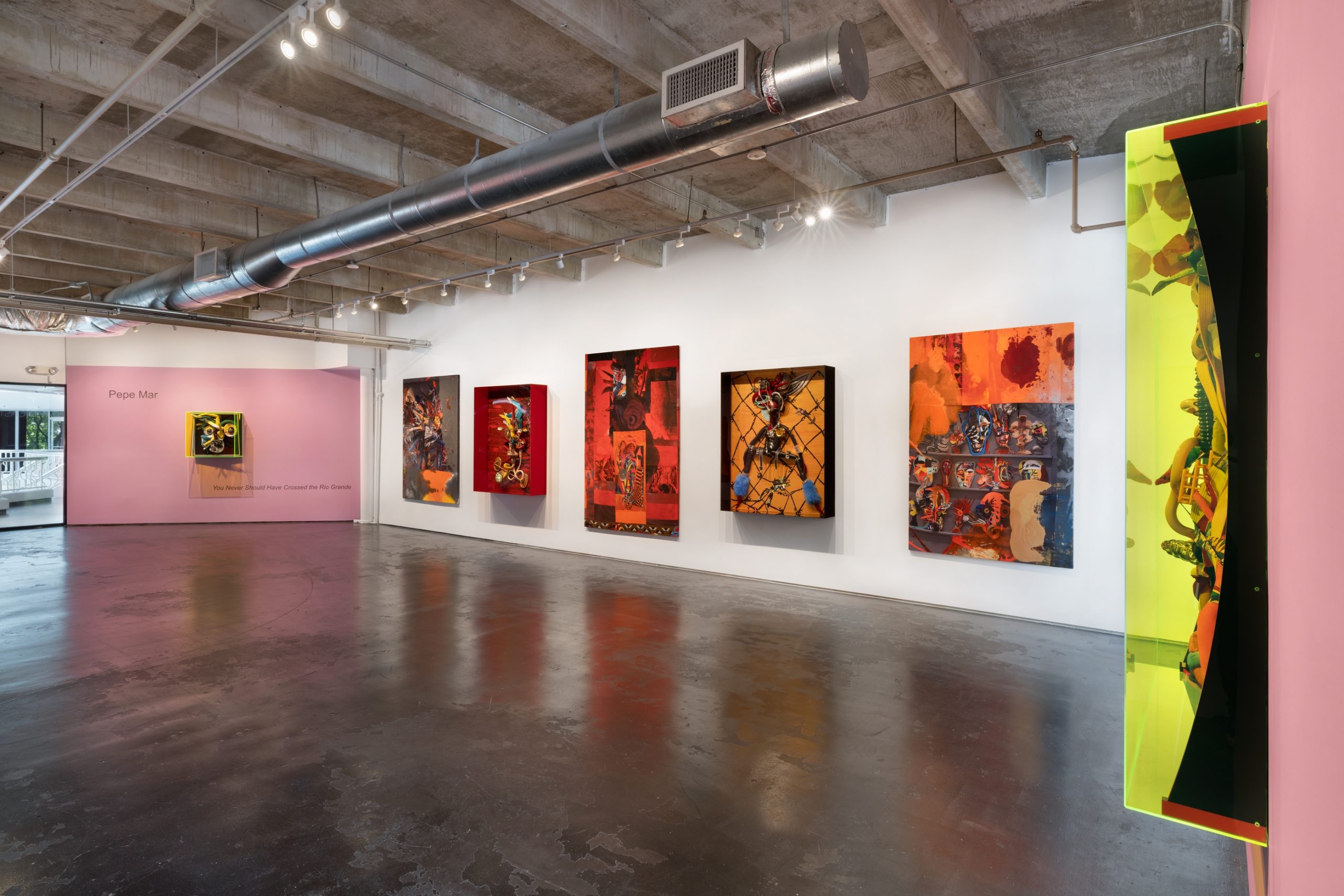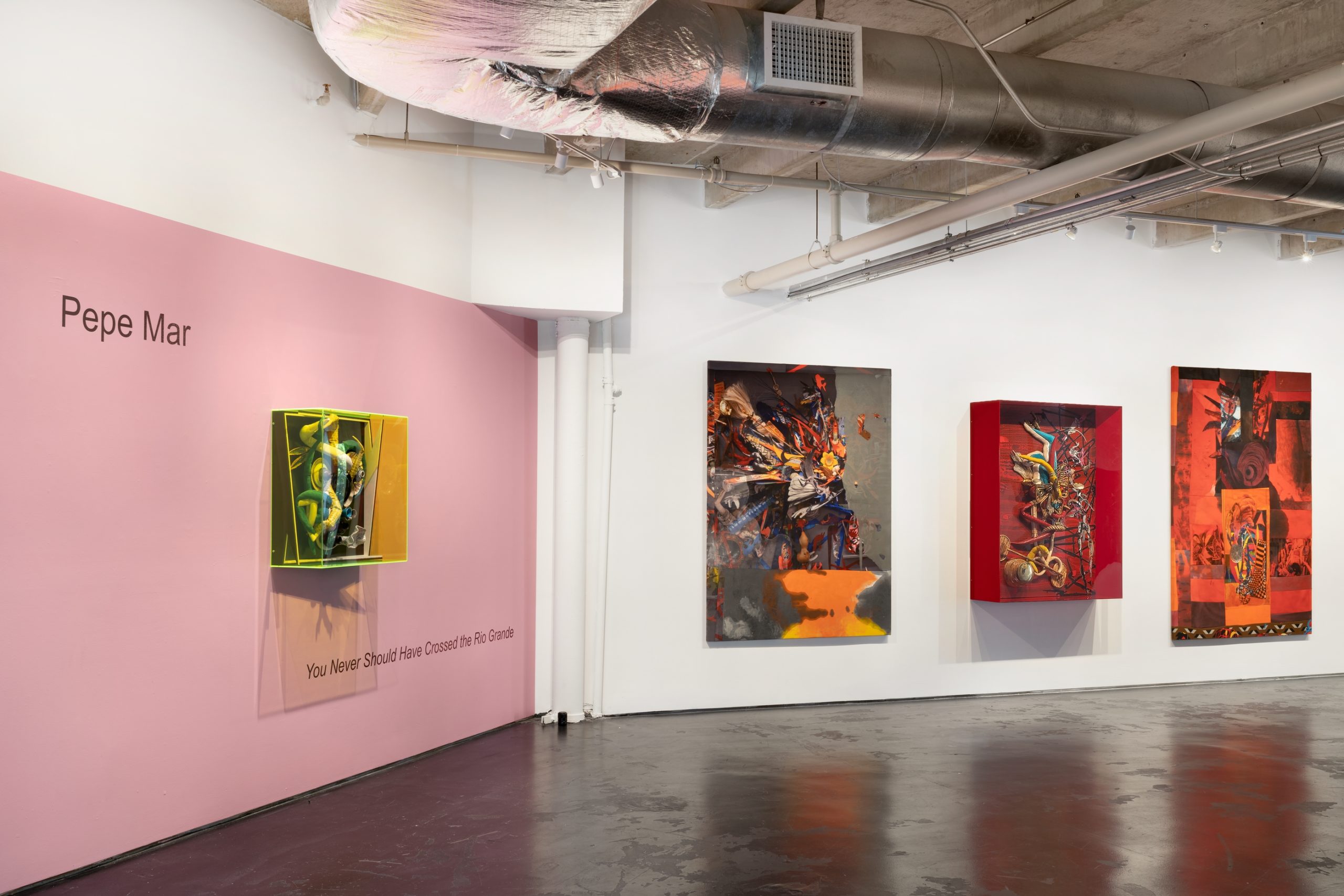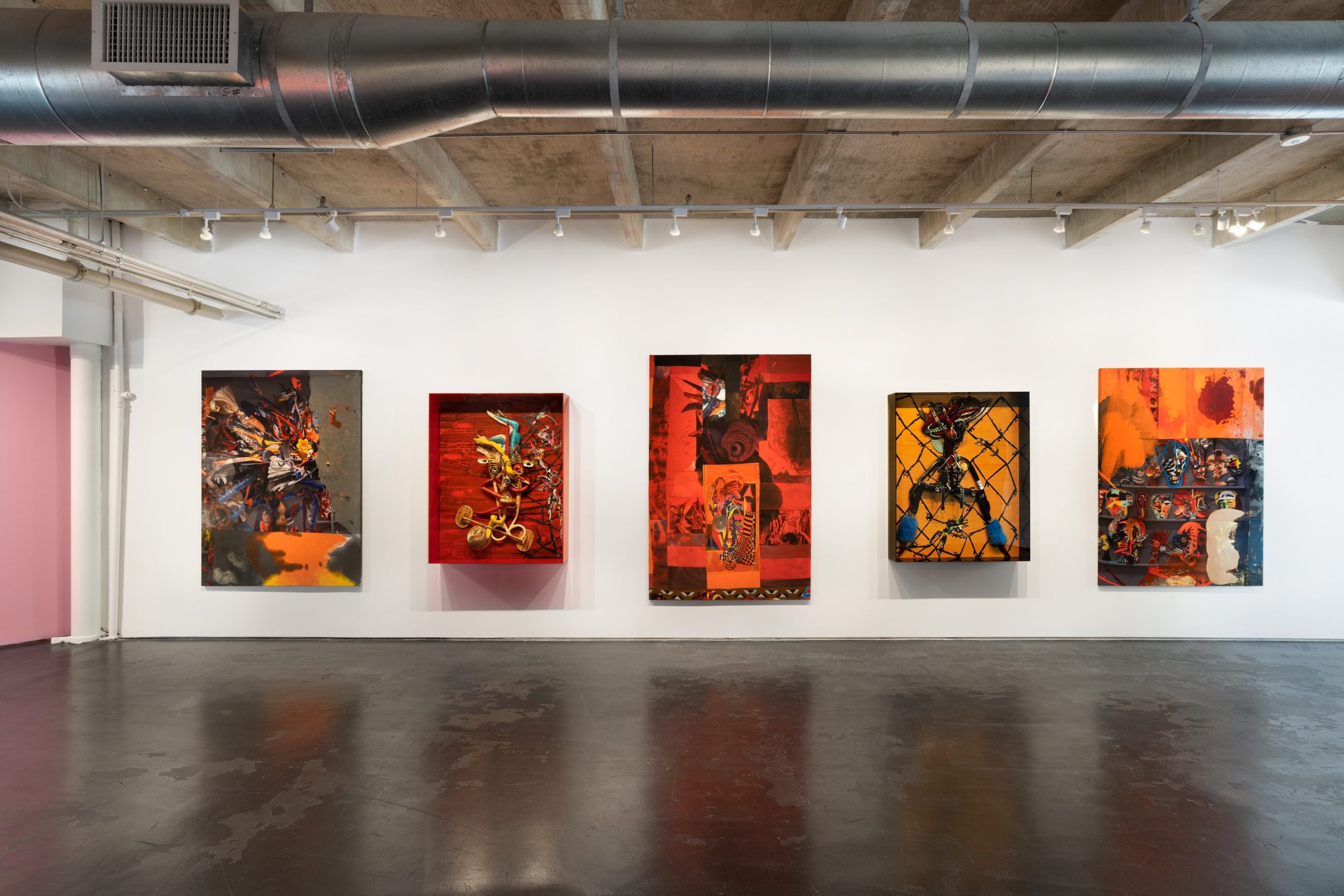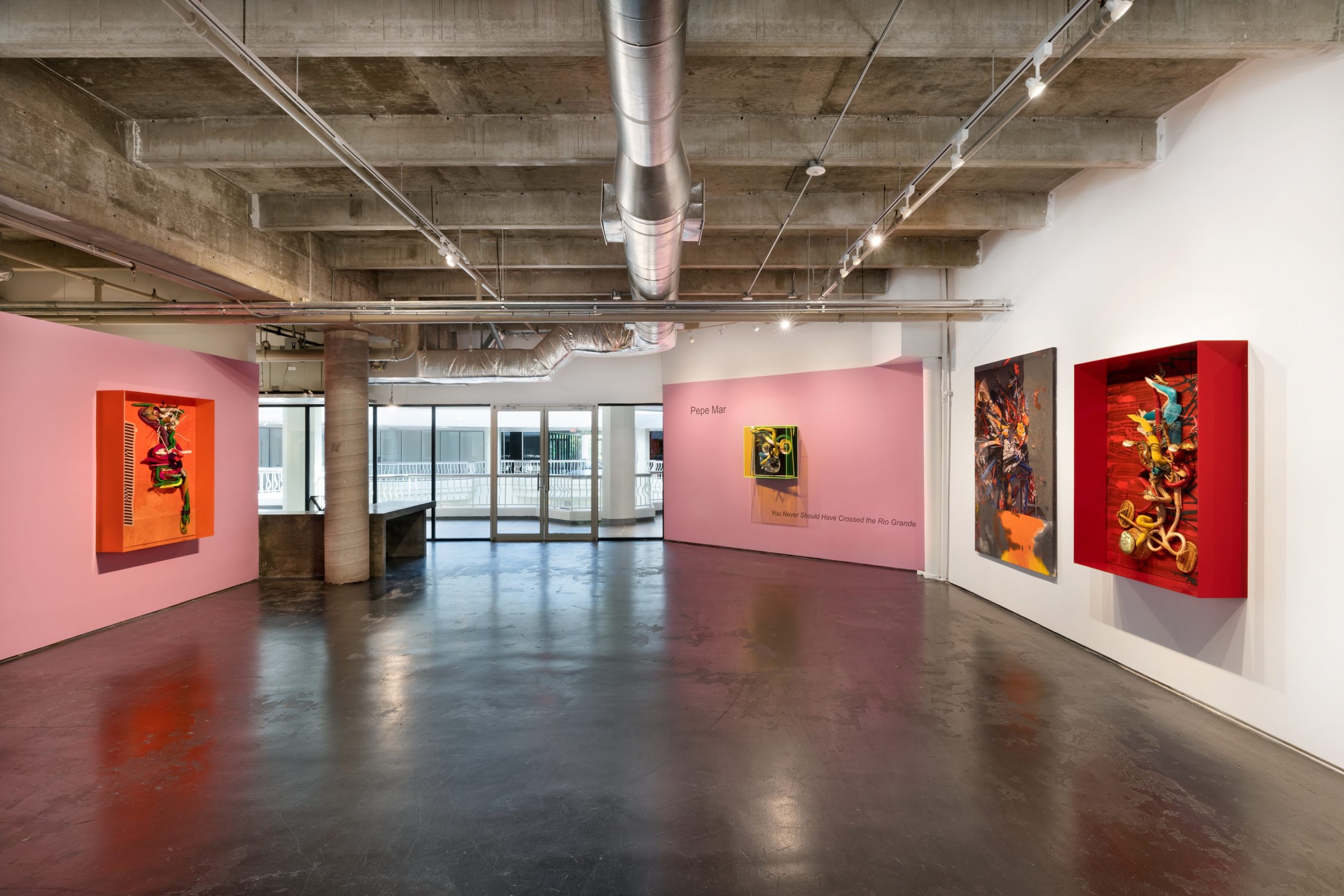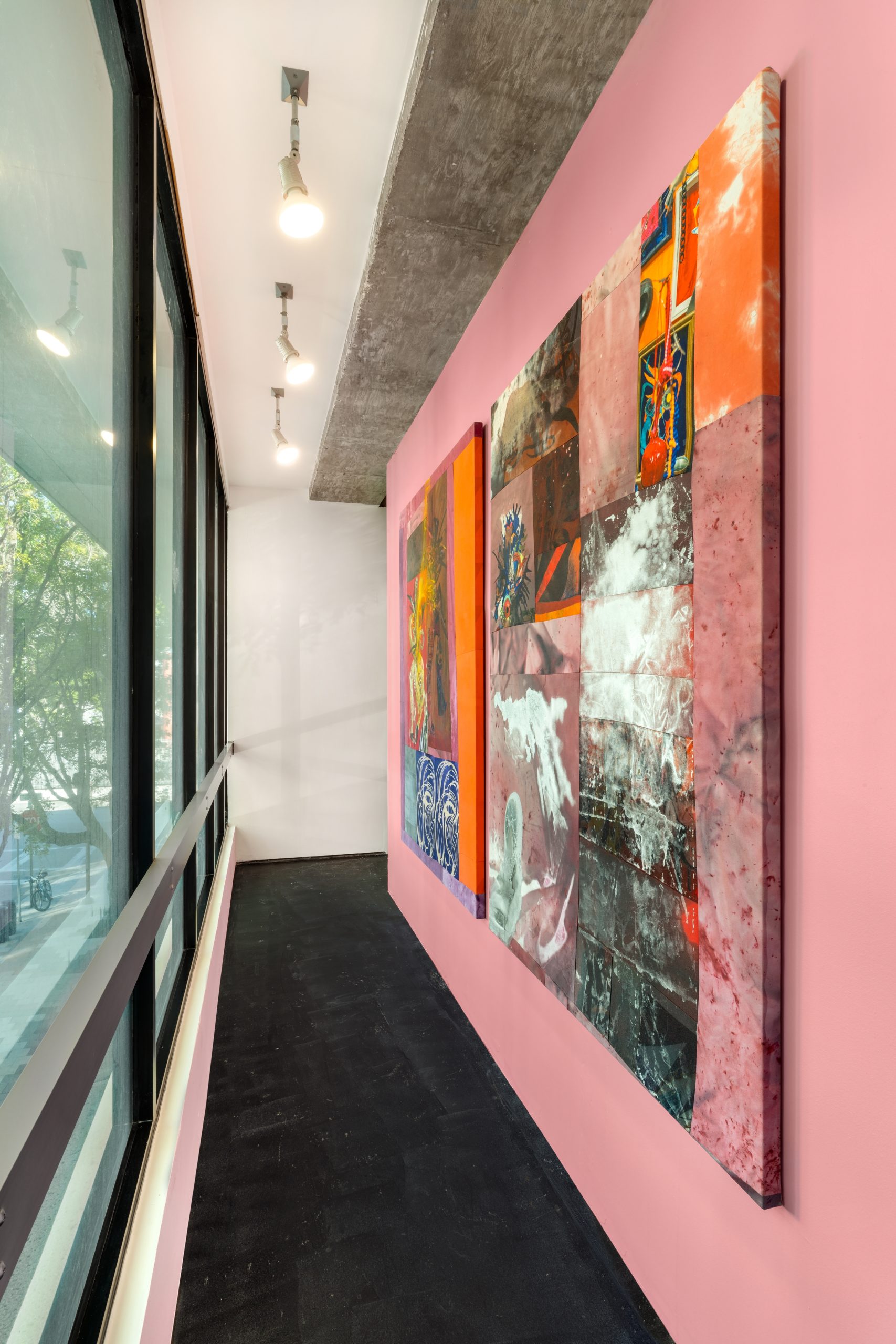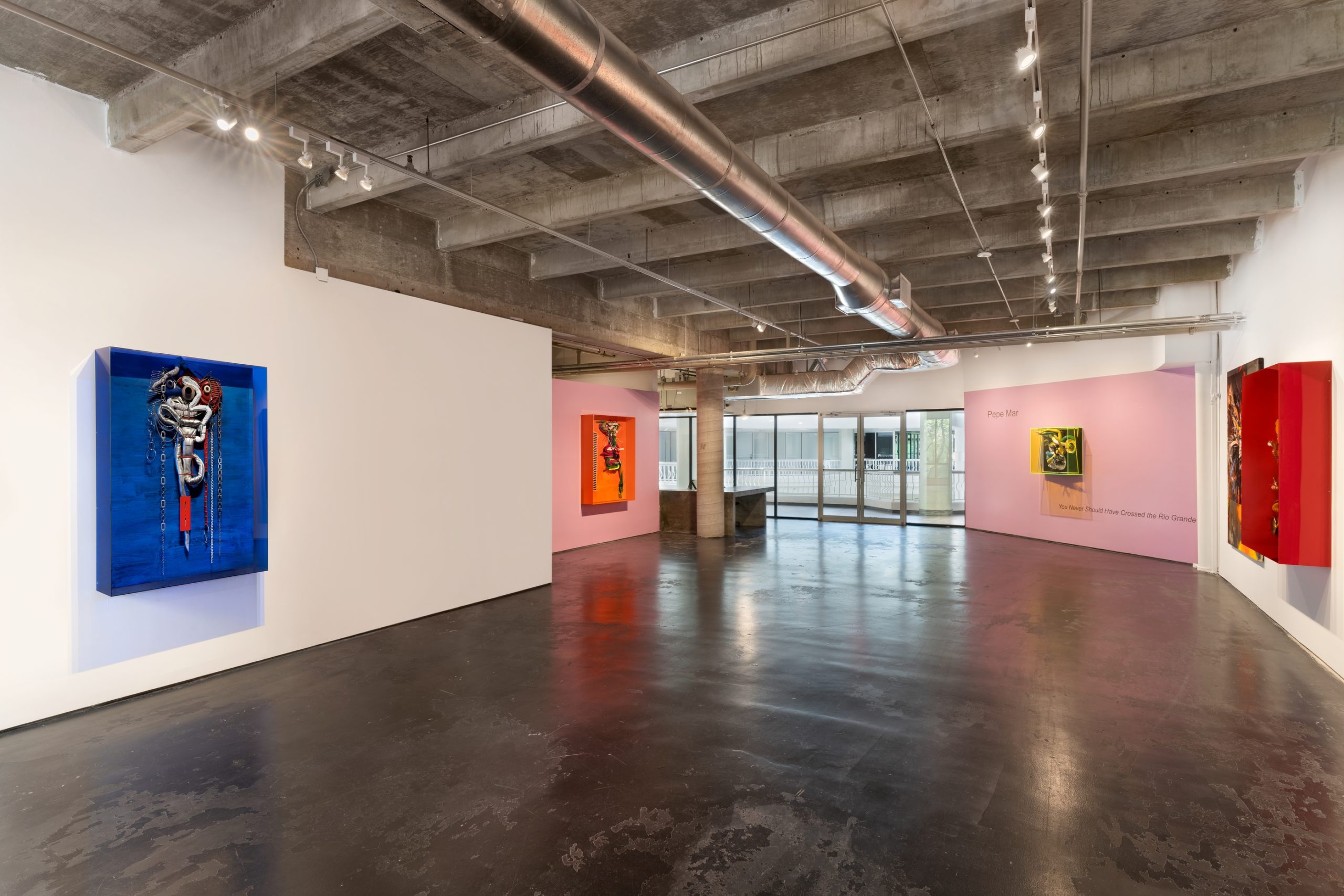You Never Should Have Crossed the Rio Grande
Pepe Mar
Exhibition Preview: Tuesday, November 30, 6 – 8 pm
Opening Reception: Saturday, December 4, 7 – 10 pm
David Castillo presents You Never Should Have Crossed the Rio Grande, a solo exhibition of fabric paintings and assemblages by Pepe Mar.
The artist’s emigration in the 1990s from Mexico to the United States serves as a stage through which he explores the development of his own work and of the country in which he now resides. Tracing the aesthetic and thematic genealogies of his practice along the two decades that have since followed, Mar considers how migratory experiences have shaped the nation and, by extension, how they have come to influence his practice in the context of a city like Miami—where he lives and works and where visual culture is inflected by a diversity of diasporas. Across the various pieces on view, Mar interlaces material references to the histories of art and museological practice; found objects and artifacts gathered from secondhand shops with ties to South Florida’s queer enclaves; and personal, pop-cultural obsessions; elements that together form highly layered frameworks of aesthetic, symbolic, and cultural meaning that point towards the overarching—yet unanswerable—question that the artist poses with this exhibition: “Would my life and practice have developed differently had I stayed in Mexico?”
At the center of Mar’s practice are anthropomorphized figures called Paprikas that take shape from the myriad found and discarded objects—curiosities, clothing, ephemera—that the artist collects as materials to seed his work. These beings serve as avatars of the artist, loose personifications assembled from the many influences that surround him in the studio. Through the effects of which they’re composed, these pieces bear within them the turning cycles of fashion, pop culture, and the material fascinations that capture Mar’s attention. In this way, these Paprikas trace Mar’s interests along the timeline of his career and punctuate periods of his practice: there was an era when these figures were made predominantly of paper clipped from fashion magazines and art history books; another when they were made of stacked and deconstructed wicker baskets; another period when the Paprikas took form from leather and bondage gear; and another still when Mar used glazed potteries to delineate the faces and bodies of these creatures. Paprikas are a mythology unto themselves, one devised by Mar to reflect the immediate material circumstances of his life and practice. As reflected in their varied forms, these Paprikas consume all that the artist feeds into them, expelling it into the world as their bodies, as new matter, and as unfamiliar contextual frameworks that bring disparate objects and pasts into contact.
History itself serves as an important and malleable tool in Mar’s practice. He readily dismantles and reassembles references to art history, its Western canon, and to cultural forms created outside of its hegemony, thereby flattening hierarchies of history to question the place and relevance of those narratives that have been privileged over others. In this way, he interrogates the visual forms that have prevailed institutionally and, through novel combinations of artifacts, imageries, and stories, proposes an alternate and leveled canon that creates space for artists of color, queer artists, foreign-born artists, and others regularly excluded from dominant narratives. To this end, Mar reconsiders longstanding institutional practices of exhibition display and treats his Plexi box assemblages as cabinets of curiosities that breathe life into inanimate things; through this presentation format, Mar evokes new linkages and contexts between the objects, images, and pasts that find themselves abutting against one another in the logic of his works. Taken a step further, Mar approaches his own archive as a material to be actively mined as a resource; his fabric paintings are made from vast swathes of textiles printed with images of artworks that Mar created during earlier periods of his career. He cuts, sews, and collages this material, paints and dyes over areas, creating an exquisite corpse of his practice where different works, materials, and times—that might have previously never overlapped—now collide and converse with one another.
For Mar, objects are charged by the legacies they carry within, inflected by their past uses and owners. And it is through his material lexicon of collaged figures, assembled forms, and revisited histories that he considers how a place can—in much the same way—be molded by those who have moved through it. He weighs how immigrant experiences have changed this nation and how local character is attuned to the traditions, cuisines, and visual cultures of those who have immigrated from abroad. Mar’s work bears motifs of Tropicalia that mirror the Caribbean and Latin American contexts of South Florida and he nods to the local histories and notable figures of the area’s queer communities; the themes and references that find themselves in Mar’s pieces are localized to his own experiences of living during this time, in this place, and as the inhabitant of a distinct set of identities. And he considers how these circumstances have charged his practice with the nuances of the cultural specificities that surround him; fundamentally, there is no divorcing Mar from his work, the influences that surge within it, and the conditions within which it unfolds.
Returning to the question that Mar poses in this exhibition—“Would my life and practice have developed differently had I stayed in Mexico?”—the answer, though ultimately unknowable, seems to be in the affirmative. You Never Should Have Crossed the Rio Grande traces the ways in which the artist, and his practice by extension, absorbs and reflects his own social and cultural milieu; through the works on view, the exhibition makes the case that a person and practice differently situated—be that in a country of origin or emerging from another life experience—would not be able to create in a manner attuned to the distinct contexts that Mar now finds himself within. You Never Should Have Crossed the Rio Grande is, in the end, a study of the ways in which art irrevocably mirrors its creator.
Pepe Mar (b. 1977, Reynosa, Mexico) lives and works in Miami, FL. His works have been shown in exhibitions and projects at The Mattress Factory Museum of Contemporary Art, Pittsburgh, PA; DiverseWorks, Houston, TX; Boca Raton Museum of Art, Boca Raton, FL; Orlando Museum of Art, Orlando, FL; Museum of Contemporary Art, North Miami, FL, and many others. Currently on view is Tesoro, “Pepe Mar’s Love Letter to the Frost,” at the Patricia & Phillip Frost Art Museum, Miami, FL. The artist has been a participant of residencies including The Bronx Museum International Residency Program and The Artist-in-Residence Program at The Banff Centre. He is a recipient of the Pollock-Krasner Award, the South Florida Cultural Consortium Fellowship, two Ellies awards and accompanying grants by Oolite Arts, and others. His work is held in the collections of institutions including the Institute of Contemporary Art, Miami, FL; Perez Art Museum, Miami, FL; Tampa Museum of Art, Tampa, FL; The Patricia & Phillip Frost Art Museum, Miami, FL; Museum of Latin American Art, Long Beach, CA, among others. In 2019, the artist’s project Varla TV was one of the installations presented during the inaugural year of Meridians, a platform for large-scale installations at Art Basel Miami Beach; the presentation was curated by Magali Arriola, Director of Museo Tamayo, Mexico City. In 2022, the artist will have a 15-year career survey exhibition organized by the Tampa Museum of Art, curated by Dr. Joanna Robotham, Ph.D., which will feature a comprehensive overview of the artist’s works and will be accompanied by a scholarly publication.


